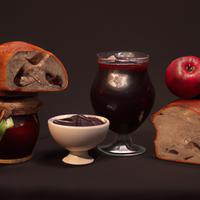
1 serving (70 grams) contains 200 calories, 5.0 grams of protein, 2.0 grams of fat, and 40.0 grams of carbohydrates.

Log this food in SnapCalorie

Nutrition Information
Calories |
675.7 | ||
|---|---|---|---|
% Daily Value* |
|||
| Total Fat | 6.8 g | 8% | |
| Saturated Fat | 1.7 g | 8% | |
| Polyunsaturated Fat | 0 g | ||
| Cholesterol | 0 mg | 0% | |
| Sodium | 844.6 mg | 36% | |
| Total Carbohydrates | 135.1 g | 49% | |
| Dietary Fiber | 6.8 g | 24% | |
| Sugars | 50.7 g | ||
| protein | 16.9 g | 33% | |
| Vitamin D | 0 mcg | 0% | |
| Calcium | 168.9 mg | 12% | |
| Iron | 5.1 mg | 28% | |
| Potassium | 270.3 mg | 5% | |
* Percent Daily Values are based on a 2,000 calorie diet. Your daily values may be higher or lower depending on your calorie needs.
Food Attributes
Source of Calories
About Bread and jam
Bread and jam is a simple and popular snack or breakfast item found in many cuisines worldwide. It typically consists of a slice of bread, which may be whole grain, white, or sourdough, paired with a fruit-based jam such as strawberry, raspberry, or apricot. The jam is usually made from fruit puree, sugar, and pectin, providing a sweet and tangy flavor. Bread and jam offer quick energy due to its carbohydrate content, and if whole-grain bread is used, it adds fiber and micronutrients to the meal. Fruit-based jams contain vitamins like vitamin C, though their high sugar content can make them less suitable for regular consumption. While convenient and satisfying, the combination can be high in refined carbohydrates and sugars depending on the ingredients used. Opting for whole-grain bread and low-sugar or homemade jam can make it a healthier choice, balancing indulgence with nutrition.



